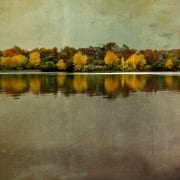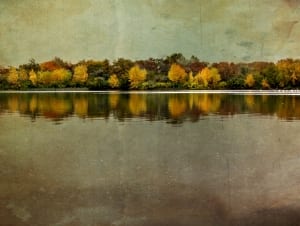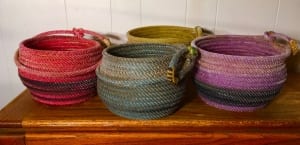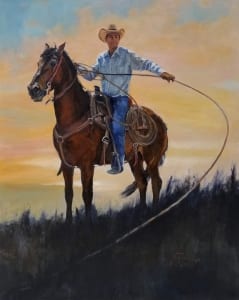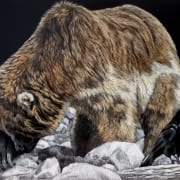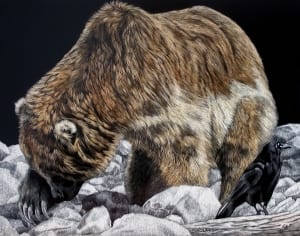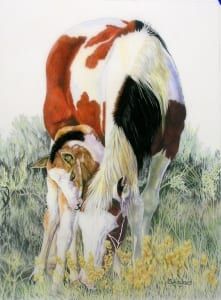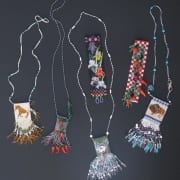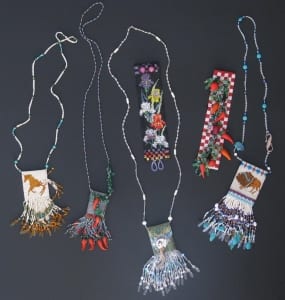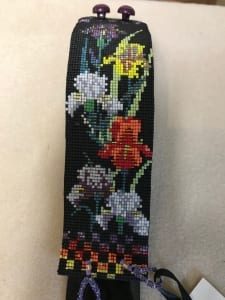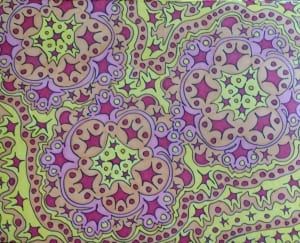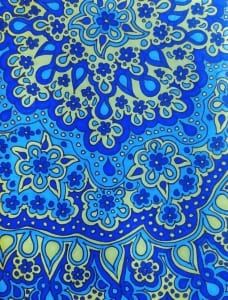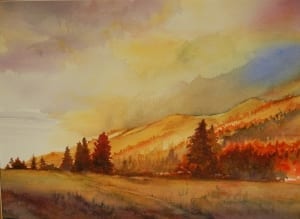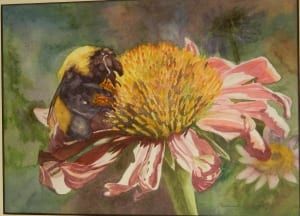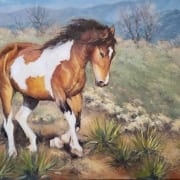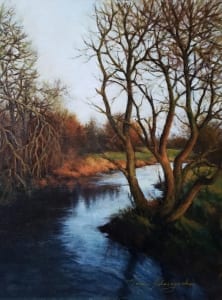Clouds Fascinate — The Photography of Nancy Richter
Clouds fascinate her
She is a grandmother now. But Nancy Richter has never lost a child’s fascination for a sky full of clouds.
As a kid, she did what lots of kids — even in today’s techno-world of substitutionary reality — still do: she lay in the grass and watched the world above.
“I grew up in Montana — Big Sky Country,” the Kennewick photographer says.

Fog and mist are simply clouds that decide to come a little closer to earth . . . Foggy Drive, photograph by Nancy Richter
“I never tired of the surprising shapes and colors of clouds. Their randomness, unpredictability, and beauty are fascinating to me.”
It is no wonder then that from the time Richter received her first camera — a Brownie Instamatic for Christmas when she was ten — she has focused on capturing the form, the mystique, the emotion, and the feeling of clouds. As technology advanced and Richter exchanged her Brownie for a Minolta SLR, then a digital camera, she kept chasing the timeless yet ever-changing vista of clouds. And though she photographs much more than the sky overhead — landscape, macro, flowers, rusty abstract surfaces, portraits, events — she retains a lifetime goal of finding the perfect combination of landscape and clouds.
Moody, Brooding Clouds
In 2011, she met photographer John Clement, of whom she had been a fan for years. The two arranged a photography day trip to the Blue Mountains in Southeast Washington. And from 3 a.m. to 11 p.m. they went to one wonderful spot after another.

In Nailed It, a country landscape and brooding, moody clouds form one of Nancy Richter’s favorite photographic combinations.
After this most amazing day, one Richter affectionately dubs “John Clement Day,” she discovered that she had taken yet another step on her photographic journey.
“I find my own way to the loveliness that’s out there, following dusty farm roads, stopping along the banks of lakes and rivers, and making my way up to the top of hills covered with wildflowers,” Richter says.
She likes her photos to be unconventional, a bit off balanced and moody, she adds. Art is best, she considers, when its subject or material is unexpected, inviting the viewer to stop beyond a first glance, teasing him or her to discover new elements and depth.
“That’s what I want to convey: something a bit off the beaten path, something that holds the observer’s interest.”
Clouds Combined with Landscapes
Within a short radius of her Kennewick studio, unusual and intriguing landscapes abound. Less than 15 minutes from her home are spots in the Horse Heaven Hills that open out into vistas of Rattlesnake Mountain and other significant ridges of the Tri-Cities area. There’s the Palouse (“That place is divine. Nowhere exactly like it on earth”). And there are the Blue Mountains, a combination of bare grass hills with forest in the ravines, farmland interwoven between.
The roads to these places can be a little dicey, though, but than again, that adds to the adventure of it all.
“One time I got stuck in the mud up to half my tire,” Richter remembers.
“A man and his 5-year-old daughter just happened to be out in the middle of nowhere with a jeep and pulled me out with a strap.
“When I first told them of my dilemma, the daughter’s comment was, ‘My dad can do anything!'”
Such is the mindset of a child, a mindset that Richter maintains with that persistent, lifelong, deep-rooted fascination with clouds. And to this day, in the process of looking up, she often finds that the ground beneath her feet is steadier, firmer, more secure.
“Sometimes when I am dealing with unpleasant emotion, the sky provides pleasant distraction,” Richter muses.
“It gets me outside and moving and enjoying. It helps ground me.
“Funny, that the sky would help me touch the earth.”
Clouds, Light, Quality, and Emotion
Richter shows and sells her work throughout the Tri-Cities area, and participates in the Thursday Art Walk in Kennewick. She has exhibited at the Richland library, You and I Framing in Kennewick, the Crossroads and Carnegie Art Center in Baker City, OR, and the Larson Gallery in Yakima. At the latter, she received the Women in Photography Award, as a well as a Purchase Award.
Richter doesn’t remember whatever happened to her old Brownie — she could have sold it at a yard sale; it may be in one of those memorabilia boxes we all cart around. But what it started will never be lost, as she discovers, and captures, a world of possibility, imagination, and enchantment. These elements transcend time and technology.
“When I take photos I feel an attraction to the scene. I’m feeling excited or having fun or am just delighted with the amazing light in that moment.
“I want people to enjoy what they see, to feel pleasure in the colors, to experience the light and the quality.”
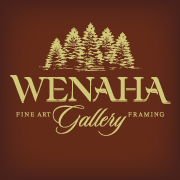 Nancy Richter is the Featured Art Event from Monday, November 18, through Saturday, December 14 at Wenaha Gallery. She will be at the gallery for the Christmas Kickoff Art Show Friday, November 29, from 2 to 6 p.m. Richter will be joined by Colfax rope basket creator Nancy Waldron and jewelry artist Andrea Lyman.
Nancy Richter is the Featured Art Event from Monday, November 18, through Saturday, December 14 at Wenaha Gallery. She will be at the gallery for the Christmas Kickoff Art Show Friday, November 29, from 2 to 6 p.m. Richter will be joined by Colfax rope basket creator Nancy Waldron and jewelry artist Andrea Lyman.
Contact the gallery, located at 219 East Main Street, Dayton, WA, by phone at 509.382.2124 or e-mail art@wenaha.com. Gallery hours are 9 a.m. to 6 p.m. from Monday through Saturday, and by appointment.

